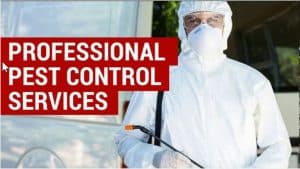
Looking For A Wasp Control Services In Your Area
All stinging insects are scary when we think about them, but wasps are definitely the scariest! These aggressive little creatures are even more vicious and deadlier than your ordinary honey bees. Unlike bees, wasps don’t leave their venomous stingers on the human skin. Instead, they can withdraw it and reuse it to sting their victims over and over again!
The sting of a wasp causes excruciating pain and burning sensations. It can also trigger side effects like severe itching, swelling, and redness on the bitten area. You probably try to avoid wasps. But that doesn’t mean that these scary invaders are trying to stay out of your way. In fact, it seems like wasps will always bother you when you’re trying to enjoy a good time in the great outdoors, especially if they are nesting near the backyard of your home.
Perhaps you’re worried about wasps? Contact Maximum pest control services (905) 582-5502 today to schedule a complete inspection of your property and customize an effective treatment plan for your specific situation.
Wasp Identification: How to Identify Wasps
Not everything that buzzes and stings is a wasp!
There are more than 9,000 species of stinging insects on the face of the earth. These fascinating insects are incredibly beneficial in their natural environment as most crops depend on them for pollination. However, when stinging insects invade our homes, they can become a public health risk as our exterminator’s deals with on regular basis.
This quick guide will help you identify if your buzzing visitor is indeed a wasp. There are more than 1,000 species of wasps. But yellow jackets and paper wasps are the most common. Wasps typically have a narrow section (flexible waist) joining their thorax to their abdomen. This area acts like a hinge, allowing the wasp to curl its’ abdomen under to sting its’ victim while resting on their skin.
While some wasps are black, others, like yellow jackets, can have stripes of bright yellow, orange, white, and black colors. Some wasp species can also have metallic green and blue colors. Unlike bees, wasps don’t have a lot of hairs. They also have visibly thinner and longer bodies and legs than bees.
Aggressive by nature, wasps won’t go out of their way to sting you. But they like to hover around humans, and they gravitate towards our foods. So if you feel like your picnic is being threatened, the culprit is most likely a wasp nest nearby.
How Do Wasps Get into The House?
Generally, wasps use any opening to enter your residential or commercial building. They can enter your home via open windows, doors, or the air conditioner. Here are other locations ants can use to get into your house:
- Ajar roof tile
- Basement
- Attics
- Bathroom and laundry exhaust vents
- Chimney
- Hitchhiking on people and items
Why Do Wasps Invade Homes?
Wasps can get into your house for many reasons. Firstly, they are on a quest for a good place to nest and stay protected from the weather conditions. Unfortunately, your home or office is a stellar option as it offers many such places to all types of pests.
Secondly, your home is an enticing place for wasps to settle down as besides providing a regular food supply, it also offers them safety from predators that eats them especially birds. Other reasons why wasps come inside include:
- A food source:Although most people see them as vindictive and spiteful invaders, wasps can help keep the population of nuisance pests in the house at bay.
- Ample wood supply:Piles of wood on your property can attract paper wasps who build their nests using wood pulp.
- A safe place to hibernate:Wasps can enter your home to overwinter concerning the queen safety.
- By accident or happenstance: For instance, a hitchhiking wasp
Where Do Wasps Build Their Nests
Much like humans, wasps like to shelter in places that provide safety from harsh weather and predators. In their natural habitats, wasps often build their nests inside hollowed logs. Wasp nests typically have a spherical or football shape. The nests are built with mud or paper pulp and have a grayish or straw color. Though wasp nests may look small, they are home to more than 20 adult wasps.
In our homes, wasps will build their nests in spots like:
- Under decking
- In window sills
- On the eaves of the attic
- In cracks and crevices in walls
- Behind shutter
- Inside barely used grills
- In gutters and voids
- Yellow jackets can also build their nests on the ground
What Problems Do Wasps Cause?
Depending on the level of the infestation, wasps can lead to a serious stinging episode, especially when they feel threatened. As mentioned above, wasps don’t lose their venomous stinger when they attack, so they can sting you more than once, often causing an allergic reaction.
Although these insects don’t often cause property damage, their nests may damage the aesthetic appeal of your wallboard and ceiling. There is also a possibility that scavenger pests that feed on wasps like beetles, centipedes, spiders, and dragonflies will invade your home, which can be problematic.
Tips to Keep Wasps Away from Your Home
If for any of the above reasons, wasps are attracted to your home, you can use these tips to deter them.
- Get rid of decomposing wood on your property.
- Change how you handle food and drinks outdoors to limit their availability to wasps.
- Secure garbage and keep it a safe distance from your home, as wasps are attracted to waste that has protein-rich debris.
- Try moving your floral decors a good distance from your home structure as they attract wasps.
- Apply weather stripping and install screens on doors and windows to deny wasps entry into your home
- Regularly inspect your home for early signs of wasps and their nests to enable treatment before the infestation becomes widespread by calling a wasp exterminator
Removing A Wasp Nest by Your-self Can Be a Dangerous Mission To Attract
If you have ever been stung by a wasp, you know that trying to knock down their nests on your own can be a risky job. Bees are aggressive and painful, no doubt, but not when compared to their vicious cousins, the wasps. Wasps fiercely defend their queen, themselves, and nests whenever they feel threatened.
Trying to remove a nest on your own can put you in the path of hundreds of wasps, each of which will sting you multiple times. Regardless of whether the wasps are indoors or outdoors, the infestation is best handled by a trained pest control expert.
Professional Wasp Control Services
If you have noticed wasps or wasp nests in your home, you should call a pest control expert to get rid of the problem effectively. Maximum provide 24/7 wasp removal services | Oakville, Burlington, Hamilton and Milton Ontario. Our certified insured and bonded trained wasp removal technicians have years of experience and are armed with the latest equipment and products to safely and effectively remove them from your home or business very safely. They will inspect your property and determine the safest means to quickly resolve the problem and prevent future infestations. Give Maximum a call today (905) 582-5502 or (289) 396-5426. Technicians’ Are Standing by!!!



